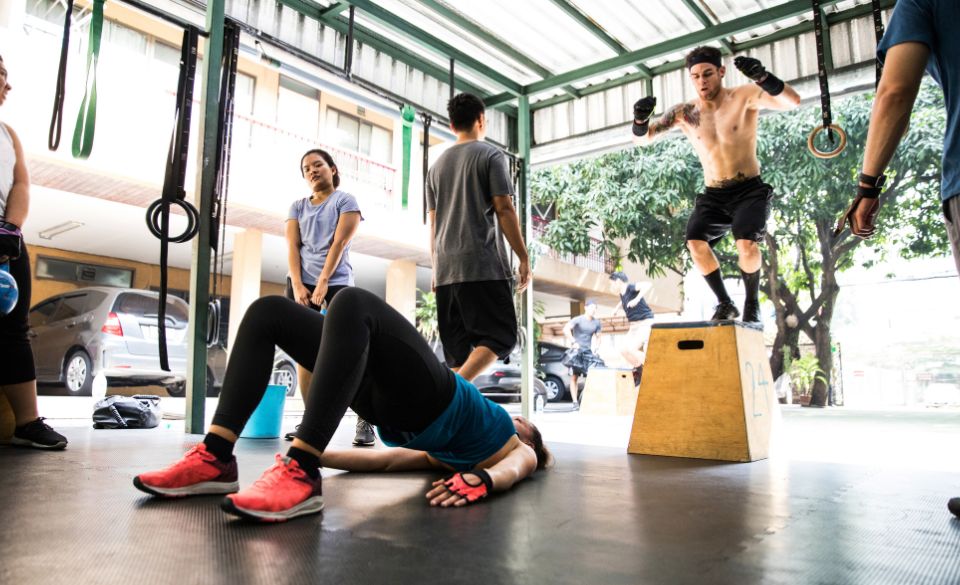
Cross-Training for Half Marathon Runners: Enhancing Performance & Preventing Injury
Page Contents
- The Benefits of Cross-Training for Half Marathon Runners
- Effective Cross-Training Exercises for Half Marathon Runners
- Studies Highlighting the Benefits of Cross-Training
- Tips for Incorporating Cross-Training into Your Half Marathon Training
- Personal Success Stories and Testimonials
- Conclusion: Embrace the Power of Cross-Training for Half Marathon Success
Cross-training, the practice of incorporating various exercises and activities into your training routine, is a valuable tool for half marathon runners. While running is the primary focus of half marathon training, integrating cross-training activities can provide numerous benefits, including improved performance and reduced risk of injury. In this article, we will explore the importance of cross-training for half marathon runners and delve into specific exercises and studies that highlight its effectiveness.
The Benefits of Cross-Training for Half Marathon Runners
Cross-training offers several advantages to half marathon runners, both in terms of performance enhancement and injury prevention. Here are the key benefits:
1. Improved Cardiovascular Fitness: Engaging in activities like swimming, cycling, or rowing can boost cardiovascular endurance without subjecting your body to the repetitive impact of running. This improves overall fitness and complements your running training.
2. Muscular Balance and Strength: Running primarily targets specific muscle groups, but cross-training allows you to work on other muscles that may be neglected. Strengthening these muscles, such as the core, glutes, and upper body, can improve running form, efficiency, and reduce the risk of muscle imbalances.
3. Reduced Risk of Overuse Injuries: The repetitive nature of running increases the risk of overuse injuries. Cross-training activities with lower impact, such as swimming or cycling, give your joints and muscles a break while still providing a challenging workout. This helps to prevent common overuse injuries like shin splints or IT band syndrome.
4. Active Recovery: Cross-training can be used as active recovery on rest days from running. Engaging in low-impact activities like yoga, Pilates, or light swimming promotes blood circulation, enhances flexibility, and aids in muscle recovery.
Effective Cross-Training Exercises for Half Marathon Runners
When choosing cross-training exercises, it’s important to focus on activities that complement your running training while minimizing the risk of injury. Here are some effective cross-training exercises for half marathon runners:
1. Swimming: Swimming is a low-impact, full-body exercise that improves cardiovascular fitness and builds upper body strength. It helps develop core stability and enhances lung capacity, translating to better overall running performance.
2. Cycling: Cycling is an excellent non-weight-bearing exercise that targets the lower body muscles used in running while reducing impact on joints. It strengthens the quads, hamstrings, and glutes, providing a great cardiovascular workout and enhancing leg power.
3. Strength Training: Incorporating strength training exercises like squats, lunges, and deadlifts helps develop lower body strength and stability, which is crucial for endurance running. It also helps build bone density and prevent injuries.
4. Yoga or Pilates: These activities improve flexibility, core strength, and stability. Regular yoga or Pilates sessions can enhance your running posture, reduce the risk of muscle imbalances, and improve body awareness.
Studies Highlighting the Benefits of Cross-Training
Several studies have investigated the positive impact of cross-training on running performance and injury prevention:
– A study published in the Journal of Strength and Conditioning Research found that incorporating cycling as a cross-training activity improved running performance and VO2 max in endurance runners.
– A study in the British Journal of Sports Medicine showed that strength training exercises targeting the lower body muscles improved running economy, which is essential for half marathon performance.
– Research published in the Journal of Science and Medicine in Sport found that a combination of resistance training and high-intensity interval training (HIIT) improved running speed and performance in trained runners.
These studies support the notion that cross-training activities can enhance running performance, increase cardiovascular fitness, and reduce the risk of injuries.
Tips for Incorporating Cross-Training into Your Half Marathon Training
To effectively incorporate cross-training into your half marathon training plan, consider the following tips:
1. Set Clear Goals: Determine your specific goals for cross-training, whether it’s improving cardiovascular fitness, targeting specific muscle groups, or preventing injuries. Having clear goals will help you select the most appropriate cross-training activities and structure your training plan accordingly.
2. Plan Your Schedule: Designate specific days for cross-training sessions and ensure they complement your running workouts. Avoid back-to-back intense workouts to allow for proper recovery and prevent overtraining. Consider alternating running and cross-training days to maintain balance and prevent fatigue.
3. Choose Activities You Enjoy: Select cross-training activities that you genuinely enjoy and look forward to. This will make it easier to stay motivated and consistent with your training. Experiment with different activities to find what works best for you and keeps you engaged.
4. Gradually Increase Intensity: Start with lower-intensity cross-training sessions and gradually increase the intensity as your fitness improves. This progressive approach helps prevent overexertion and reduces the risk of injuries. Listen to your body and adjust the intensity and duration of your cross-training sessions accordingly.
5. Incorporate Variety: Mix up your cross-training activities to provide variety and challenge different muscle groups. This prevents boredom and keeps your body stimulated. For example, you can alternate between swimming, cycling, strength training, and yoga throughout the week.
6. Pay Attention to Recovery: Proper recovery is essential to avoid overtraining and promote optimal performance. Ensure you prioritize rest days, adequate sleep, and proper nutrition to support your body’s recovery and adaptation process. Don’t underestimate the importance of recovery in your overall training plan.
7. Seek Professional Guidance: Consider working with a certified coach or personal trainer experienced in endurance training and cross-training. They can provide expert guidance, tailor a training plan to your specific needs, and help you make the most of your cross-training sessions.
Personal Success Stories and Testimonials
Real-life success stories and testimonials from half marathon runners who have incorporated cross-training into their training plans provide further evidence of its effectiveness:
1. Amy’s Story: Amy, an avid runner, struggled with recurring knee pain during her half marathon training. By incorporating regular strength training and cycling sessions into her routine, she improved her muscular strength and balance, alleviating the strain on her knees. As a result, she completed her half marathon without any knee pain and achieved a personal best time.
2. Michael’s Testimonial: Michael, a seasoned half marathon runner, experienced a plateau in his performance. Seeking ways to break through, he began incorporating swimming as cross-training. Not only did he notice improvements in his cardiovascular fitness, but his running form also became more efficient, leading to faster race times and enhanced overall performance.
3. Sarah’s Experience: Sarah, a beginner in the world of half marathons, found cross-training to be a game-changer in her journey. By incorporating regular yoga and Pilates sessions into her training plan, she improved her flexibility, core strength, and body awareness. This translated into better running form, reduced fatigue, and enhanced recovery between runs.
These personal stories highlight the transformative impact of cross-training on half marathon training, showcasing the diverse benefits and individual successes that can be achieved through incorporating varied exercises.
Conclusion: Embrace the Power of Cross-Training for Half Marathon Success
Incorporating cross-training into your half marathon training plan can be a game-changer, offering numerous benefits such as improved cardiovascular fitness, muscular balance, injury prevention, and active recovery. By choosing activities that complement running, planning your schedule strategically, and gradually increasing the intensity, you can optimize your performance and enhance your overall running experience.
Remember, every individual is unique, and it’s essential to find the cross-training activities that work best for you and align with your goals and preferences. Embrace the power of cross-training, listen to your body, and enjoy the variety and added benefits it brings to your half marathon training. So, lace up your running shoes, dive into the pool, hit the gym, and experience the transformative effects of cross-training on your half marathon journey.




